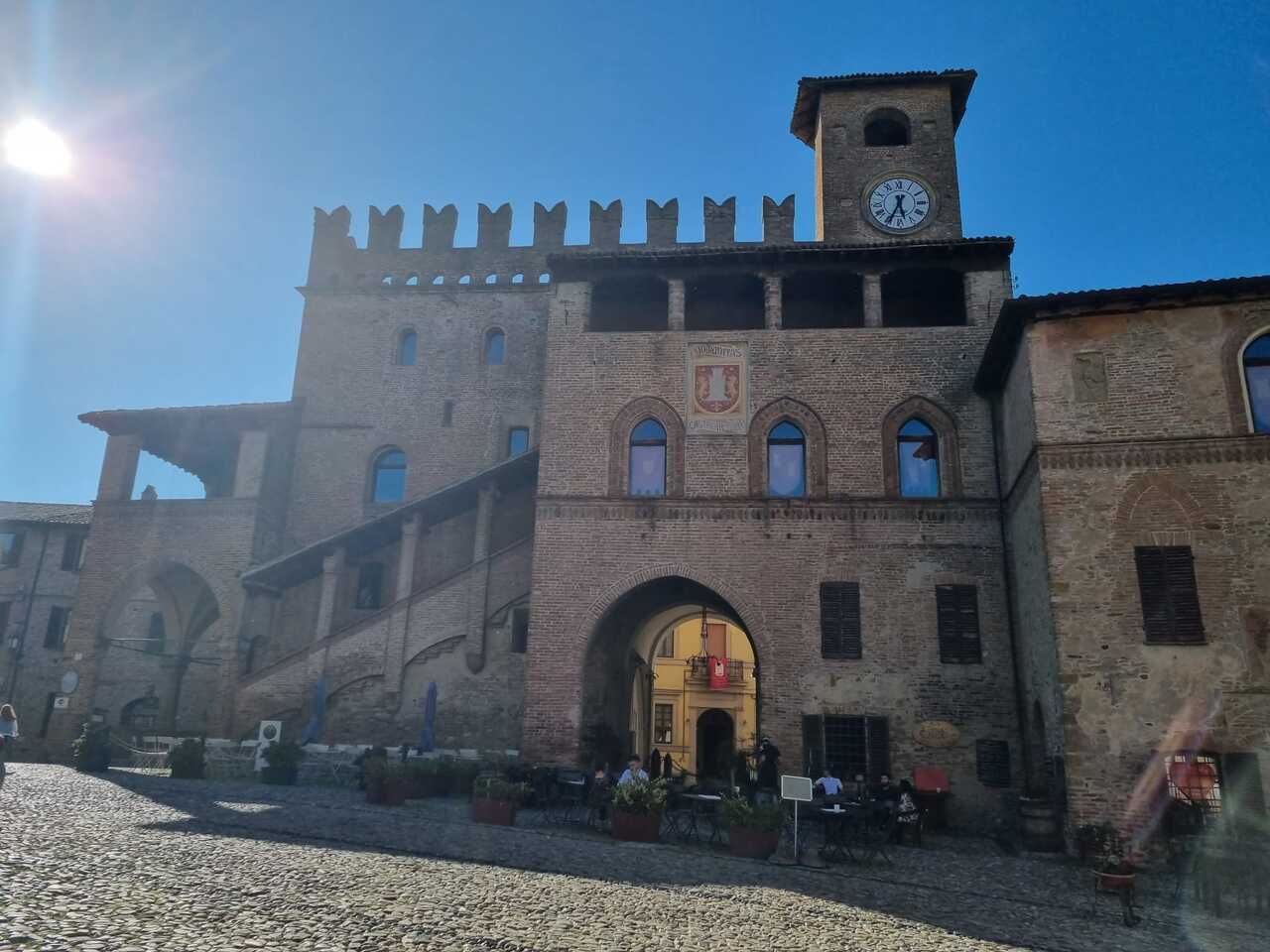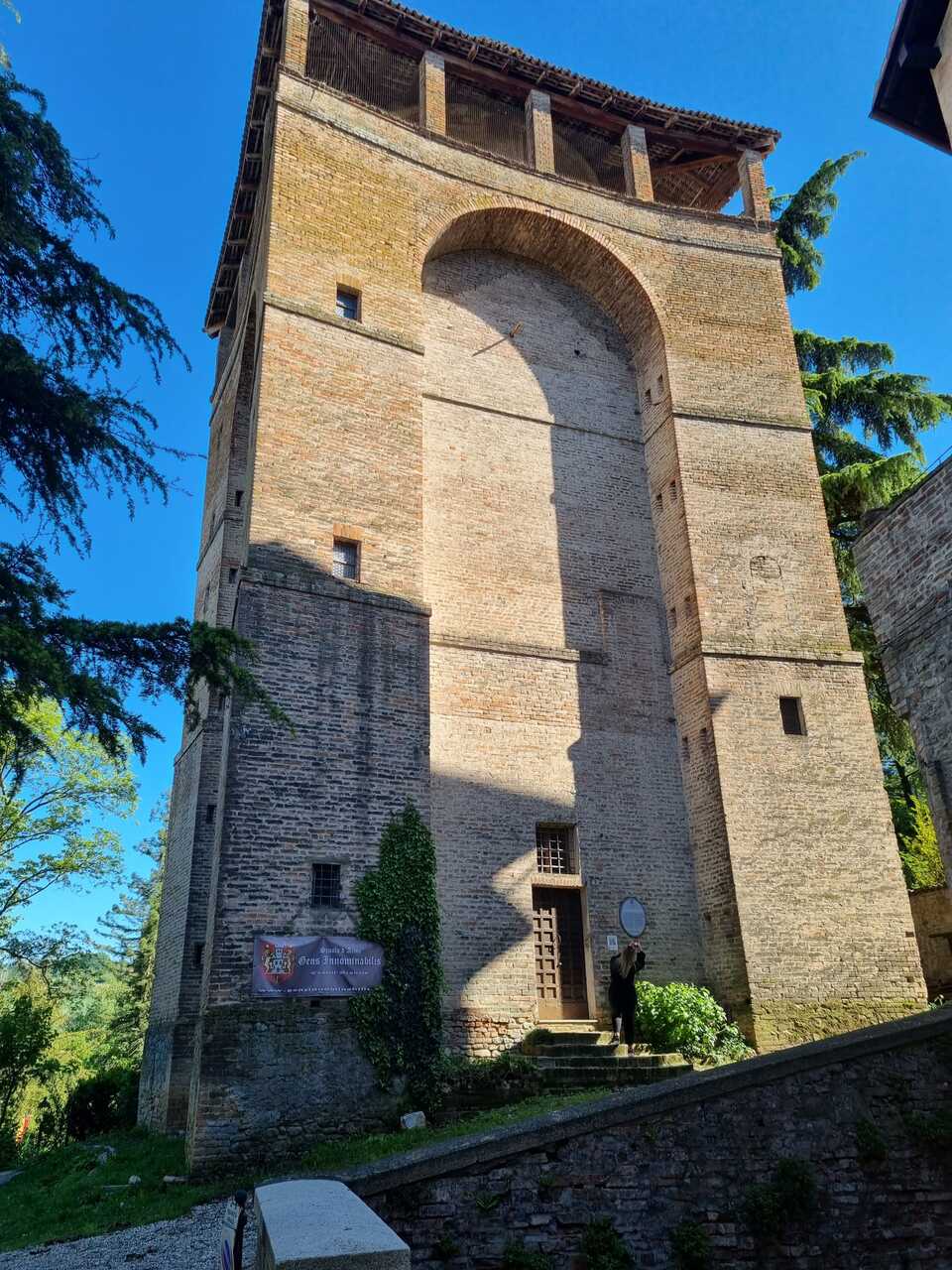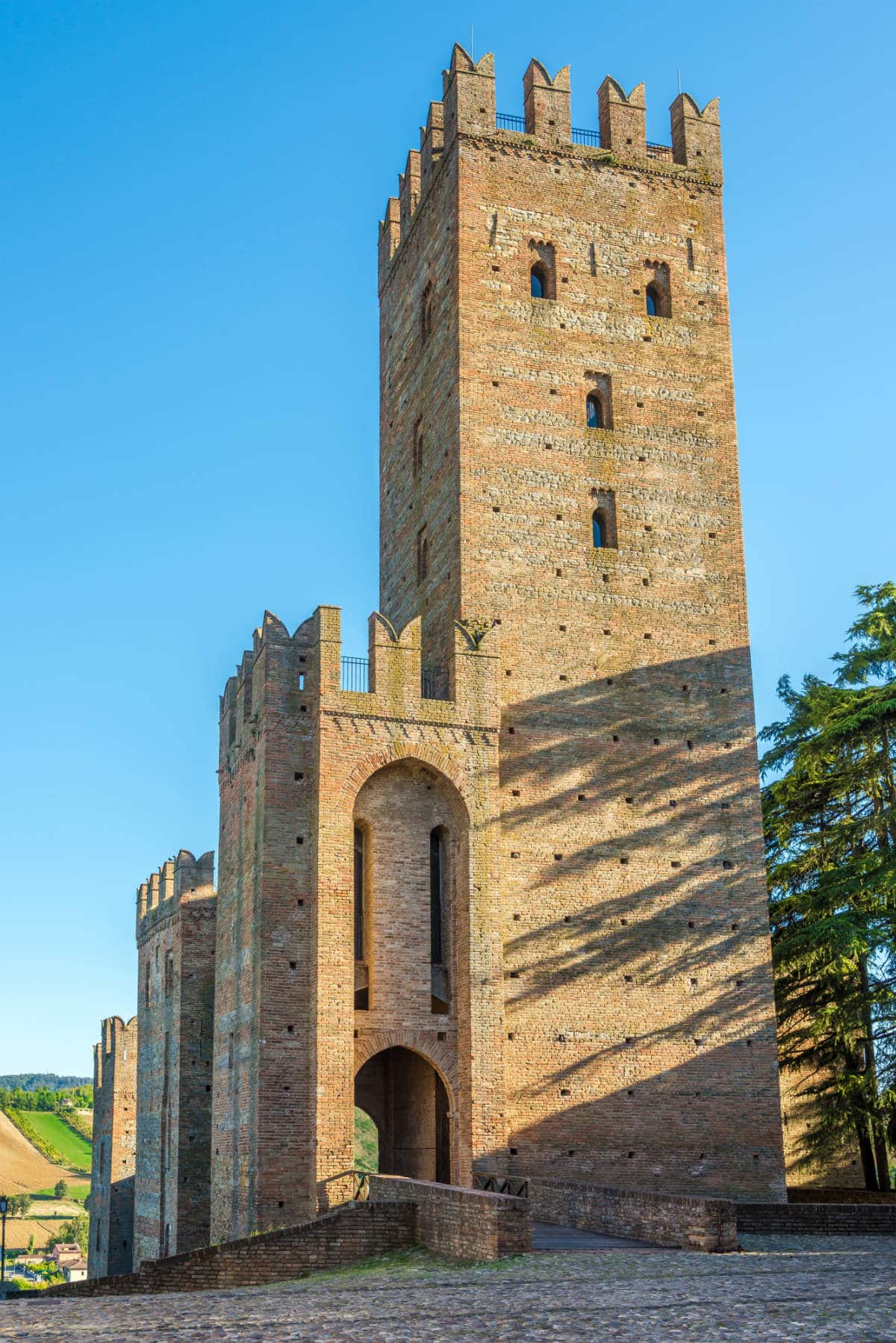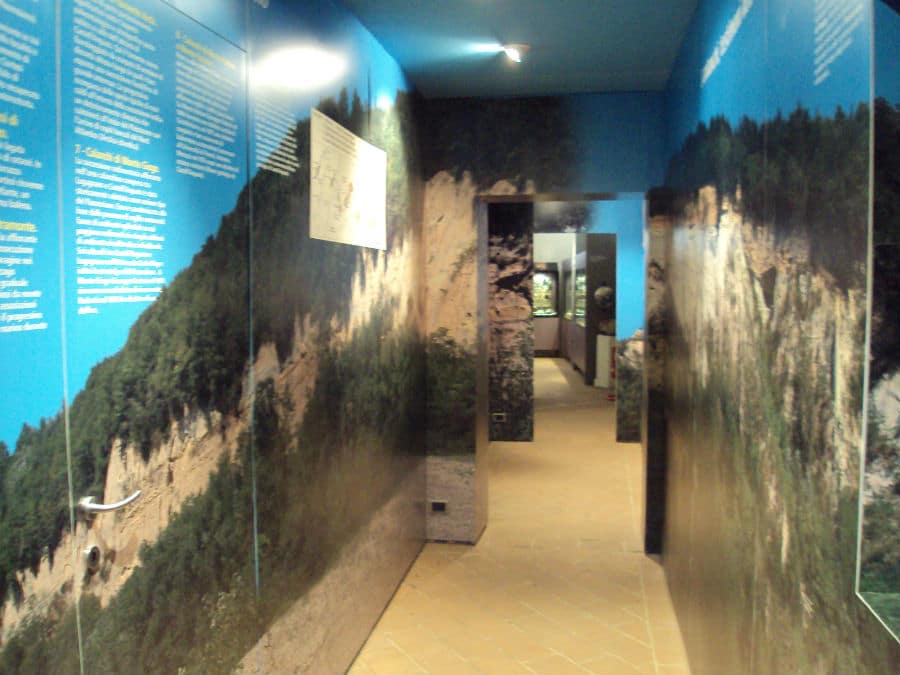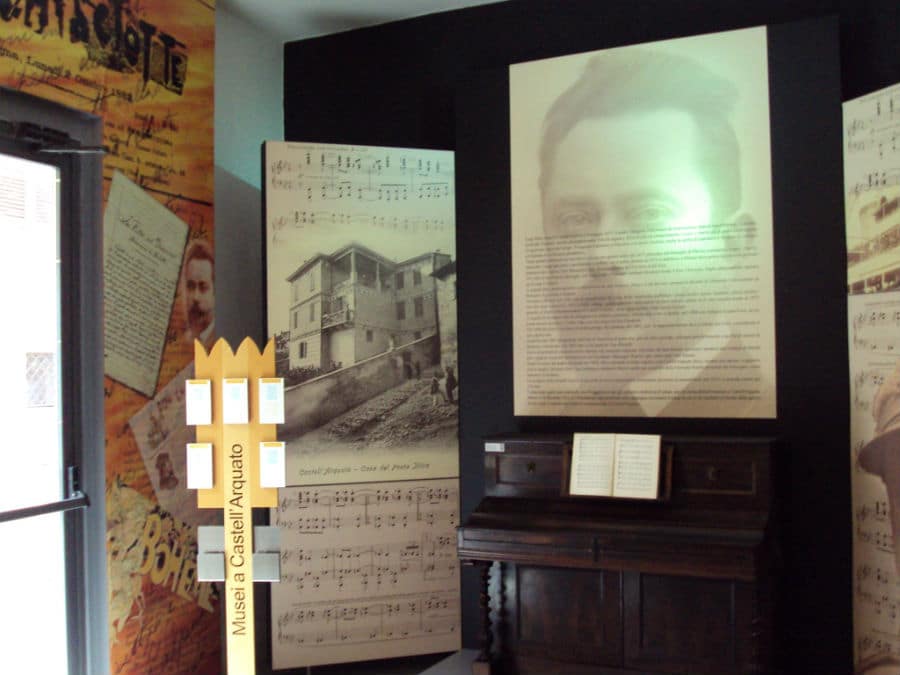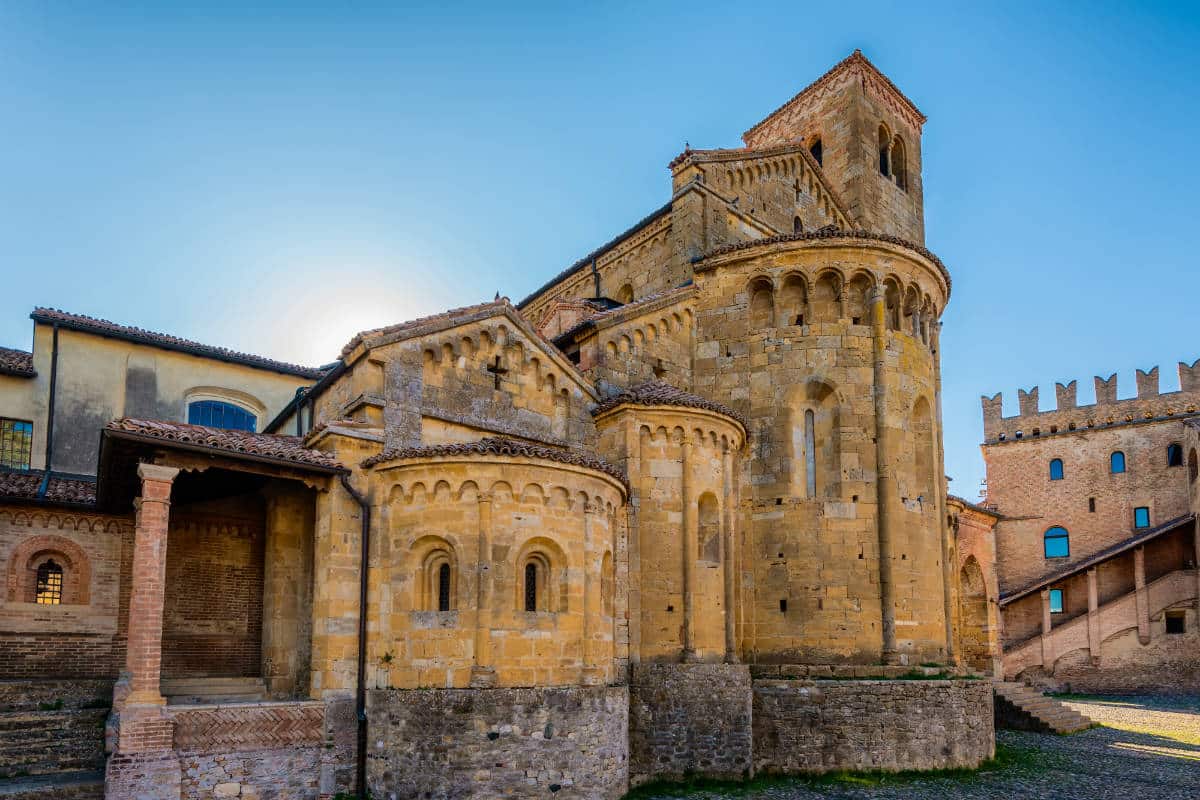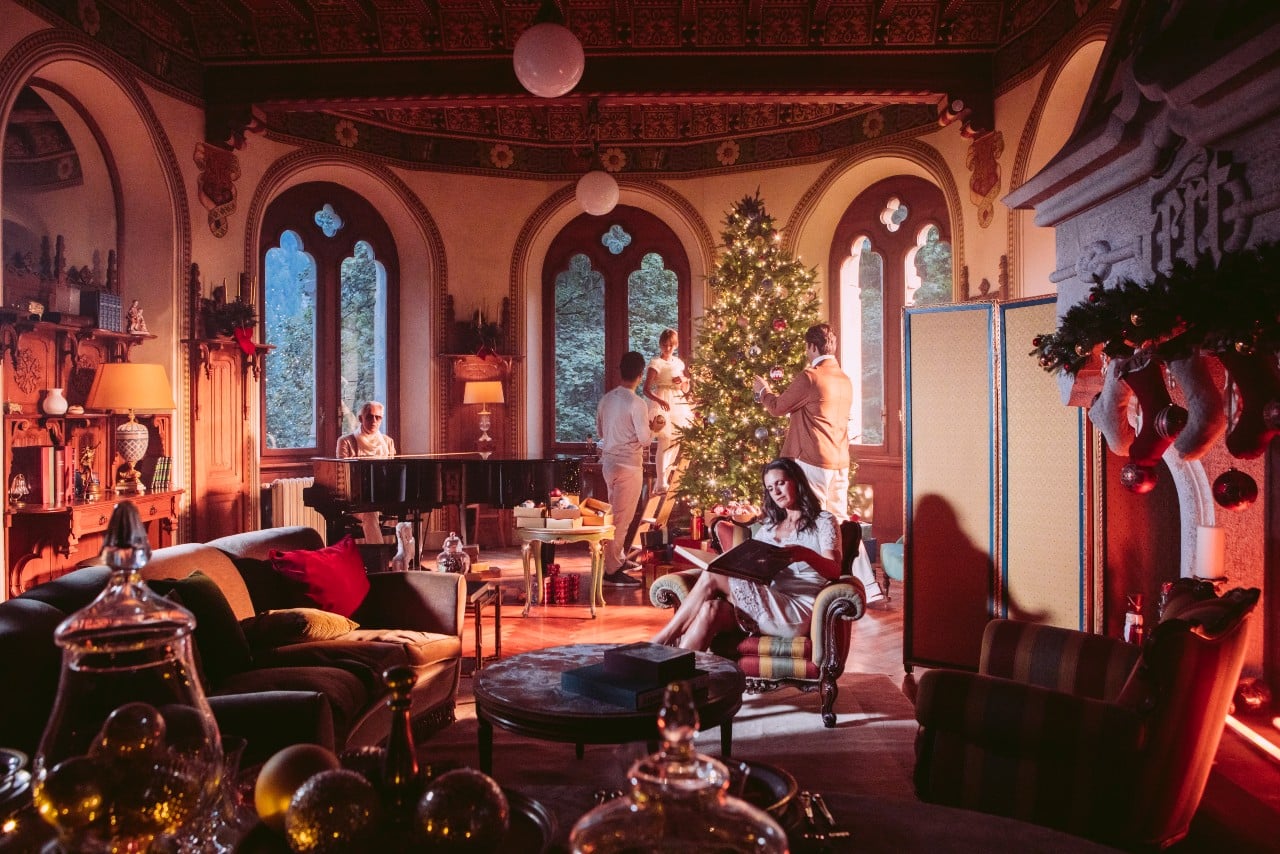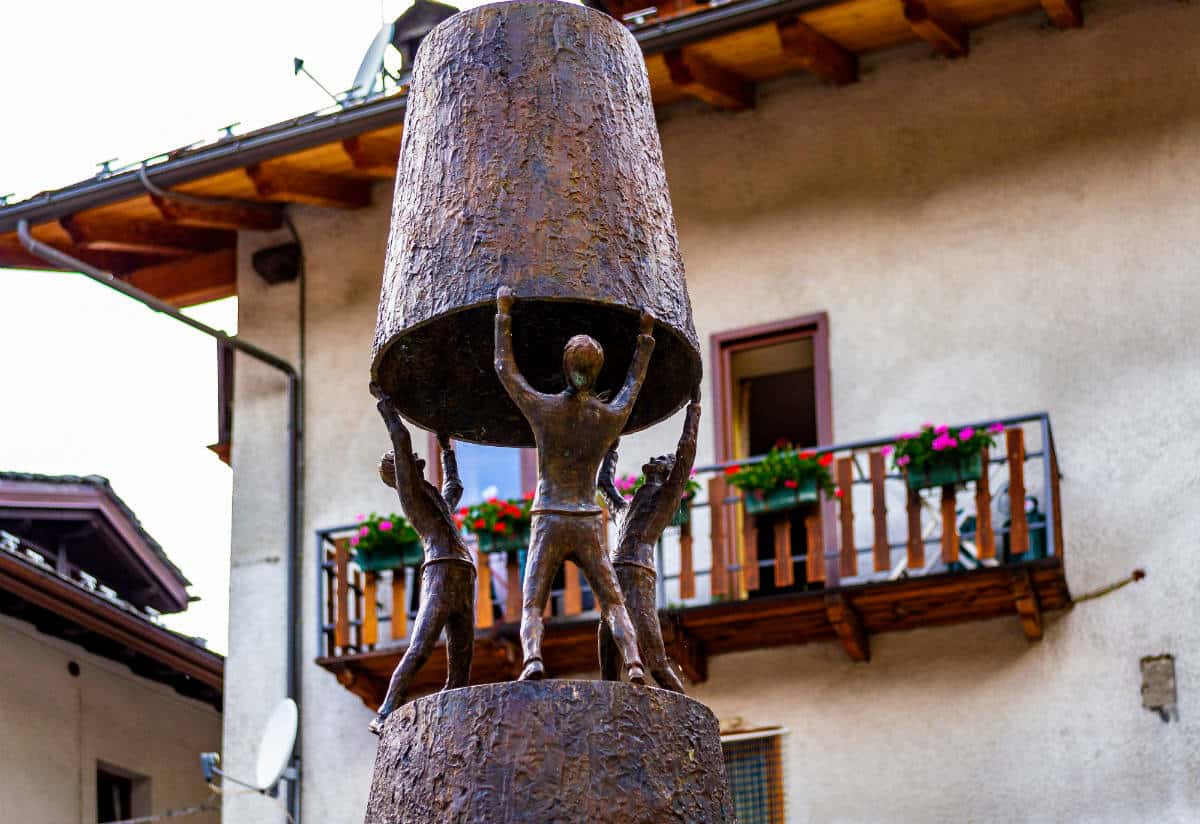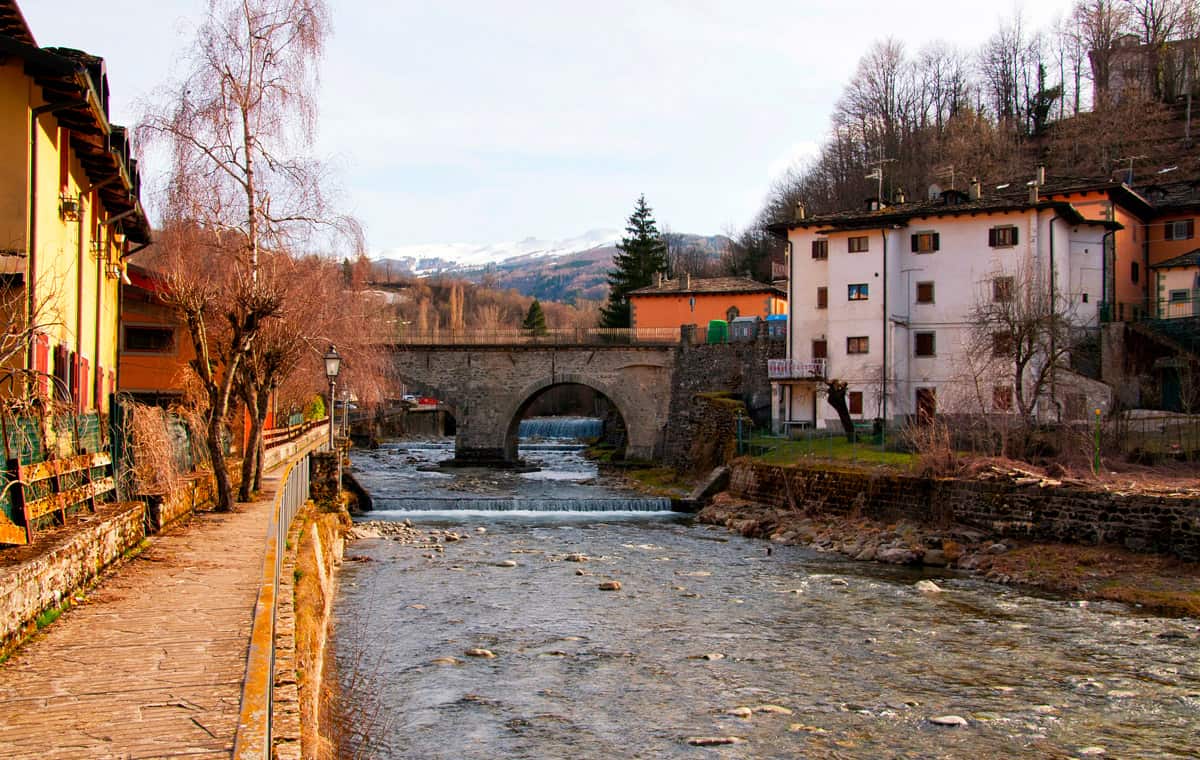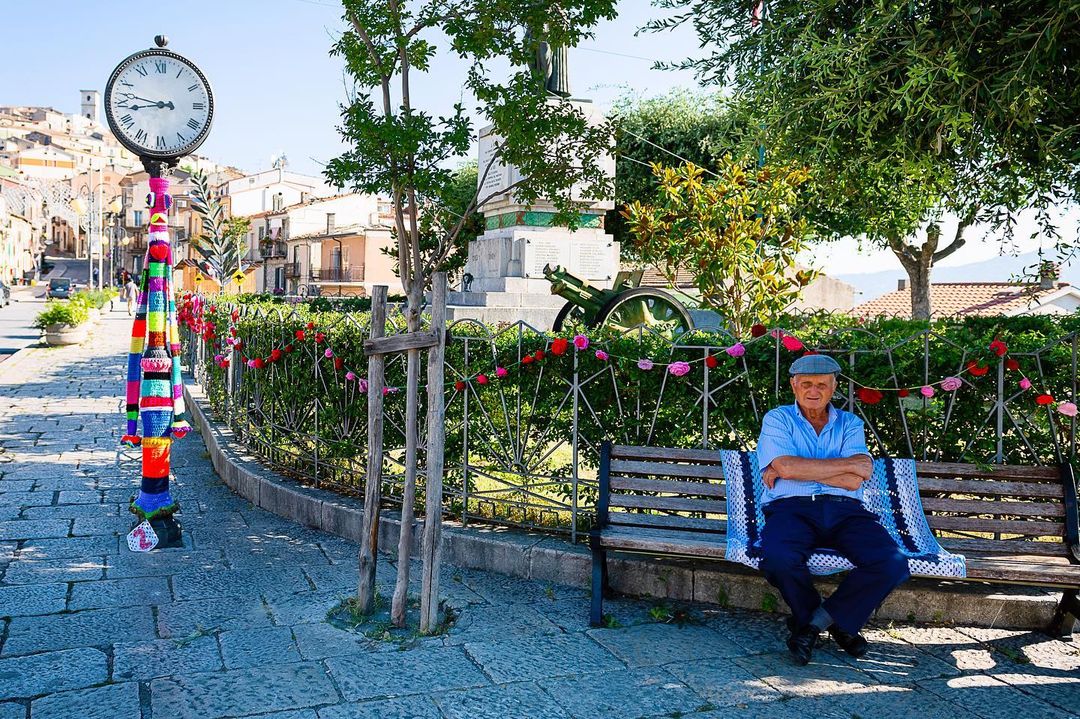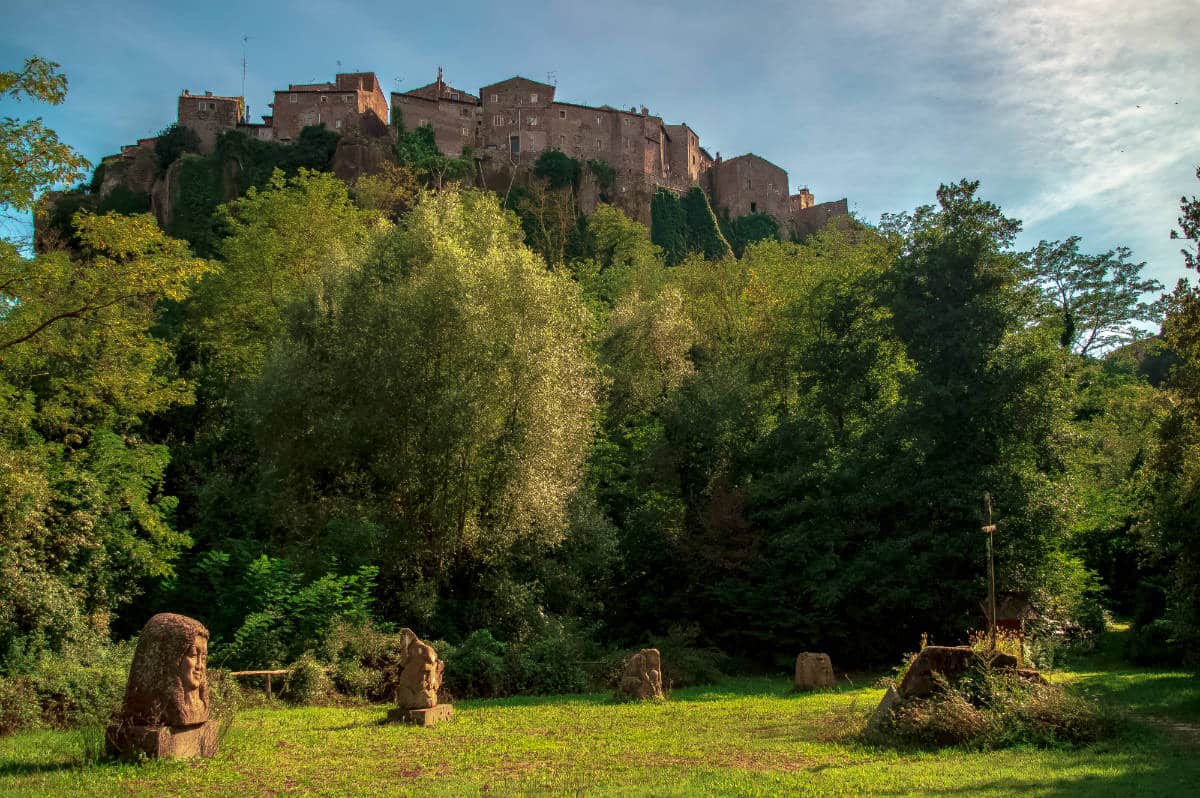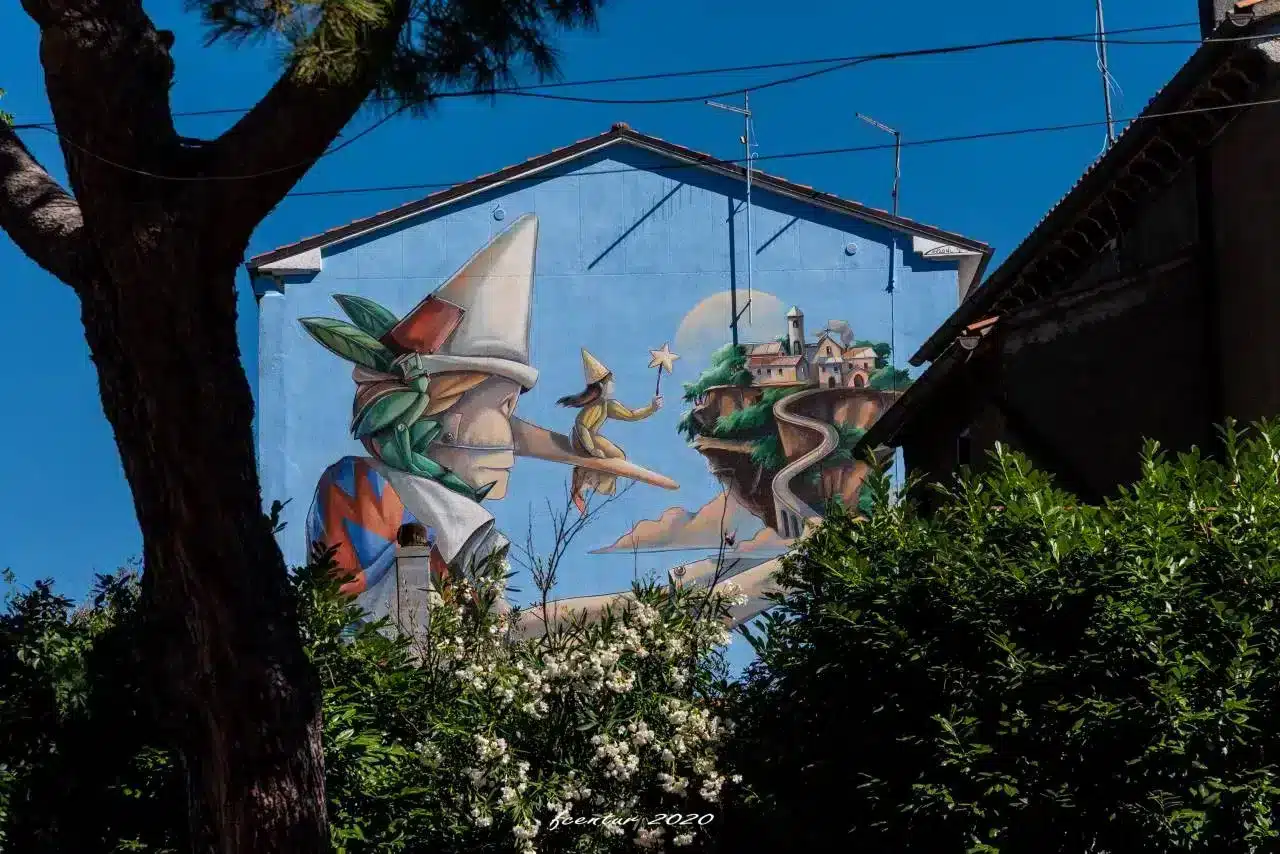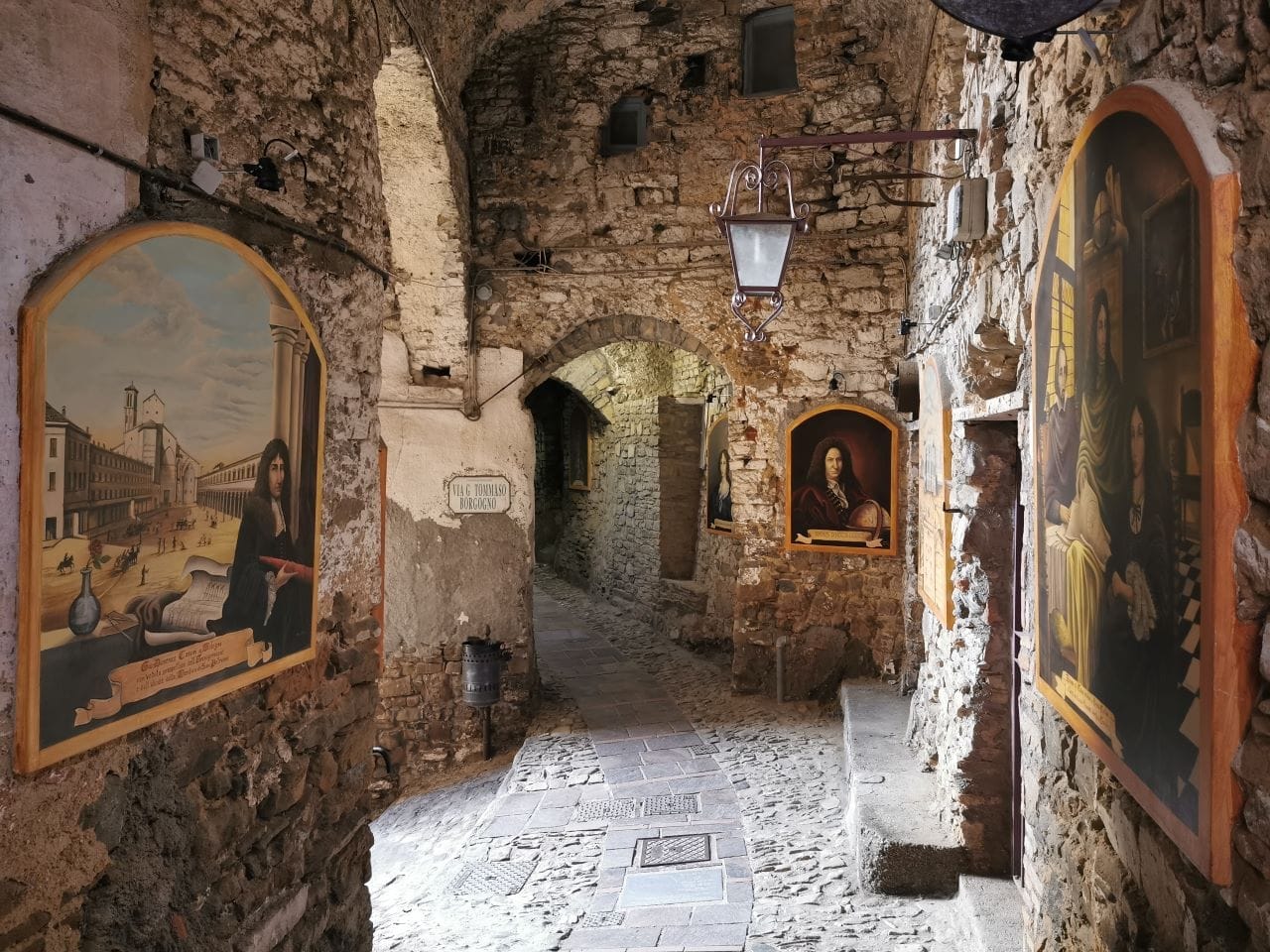Castell’Arquato is one of the most fascinating villages of Northern Italy, both for its geographical position and for its state of preservation. Here the Middle Ages suddenly seem to be in vogue again: shortly after passing the Fiorenzuola d’Arda tollbooth and just before reaching the foot of the Piacenza hills, this ancient fortified village rises from nowhere, rising above a hill from which it is possible to admire the chain of the Tuscan-Emilian Apennines. In fact, Castell’Arquato dominates the Val d’Arda, a verdant slice of generous countryside of vineyards, which during the 15th century was the exclusive territory of the Visconti family.
Castell’Arquato is a village all uphill (and downhill). Passing through the Porta di Monteguzzo, the intersection between the urban center and the historic center, and walking along Via Sforza Caolzio, the main artery of the ancient town, you can reach Palazzo Stradivari in about five minutes on foot, with its vault which leads to the upper part of the medieval village. From here on, the paved road becomes more impervious, but this does not prevent cars and trucks from passing. This, unfortunately, is the only flaw we found during our trip to Castell’Arquato: allowing everyone (not just residents) to drive through the village takes away a bit of magic from a perfectly intact vintage context.
At the end of the path to ‘u’ opens Piazza del Municipio, where the three most important monuments of the town are gathered: Palazzo del Podestà (seat of the municipality, but also of exhibitions and conferences), the Collegiate (church dedicated to Santa Maria Assunta ) and the Rocca Viscontea (containing an interesting multimedia museum that tells of medieval uses and customs). The Rocca, built in the 1300s, was the symbol of Castell’Arquato’s military power. It is characterized by its imposing towers that had defensive and surveillance purpose over the valley and is included in the tour of the Castles of the Duchy of Parma, Piacenza and Pontremoli. You can go up to Piazza del Municipio also taking Viale delle Rimembranze, a tree-lined path that, starting from the Farnesiano Tower, runs alongside the village.
The Rocca Viscontea is associated with a legend handed down over the centuries. The chronicles of the seventeenth century refer to a sad story of blood and love. Year 1620: the Lordship is in the hands of Cardinal Sforza: the news comes to his ears of a conspiracy hatched by a certain Sergio Montale and his servant Arturo Galatti called “Spadone”. Immediately the Sforza ordered the arrest of the two and the consequent sentence to torture and then to death. The petitions of the family members have no effect and the two await execution in the dungeons of the Rocca guarded by Gaspare Dallavigna and his assistant Giacomo Manara. The Dallavigna, a harsh and severe man, has his beautiful daughter Laura with him, who takes pity on Sergio’s fate and falls in love with him. On the night of April 15, Laura, after having taken the keys from her father, opens the cell door and escapes with the two convicts. However, the action of the helpless and alert eye of the Dallavigna adjutant does not escape his attention: he runs to wake up the superior and the exits of the Rocca are blocked. “Spadone” stops Dallavigna and the three can escape. Taking advantage of the occasion, Manara puts into action a grim purpose that he had been harboring for years: he pushes Dallavigna off the drawbridge killing him. Upon hearing her father’s scream, Laura stops and the armigers surround the fugitives: only “Spadone” manages to escape. The Podestà immediately begins the trial and despite the declarations of innocence of the young condemn them to flogging followed by beheading. The sentence is carried out on May 20, 1620. “Spadone” finds no more peace and after seven years of inaction, the night of Christmas Eve appears before Giacomo Manara and, avenging his friend Sergio, kills him and then becomes the Podestà. The informed Sforza writes a letter to also solicit his death sentence but the Podestà understands the situation and answers the cardinal that the municipality is poor, does not have the money to pay the employees and even less to organize the execution, therefore he suggests to “His Excellency” to turn the sentence into life imprisonment. The Cardinal accepts and “Spadone” is not executed. With the research group on the paranormal E.P.A.S. from 2014 traces of these characters are sought. During the year, in fact, there are night guided tours.
Reaching Castell’Arquato (in the province of Piacenza) is very easy: those coming by car from Milan or Bologna must take the A1, exit at Fiorenzuola d’Arda. Immediately find the signs for Castell’Arquato, which is ten kilometers from the motorway. For those arriving by train, the nearest railway stations are those of Fiorenzuola d’Arda and Fidenza. Guided night tours are provided.



